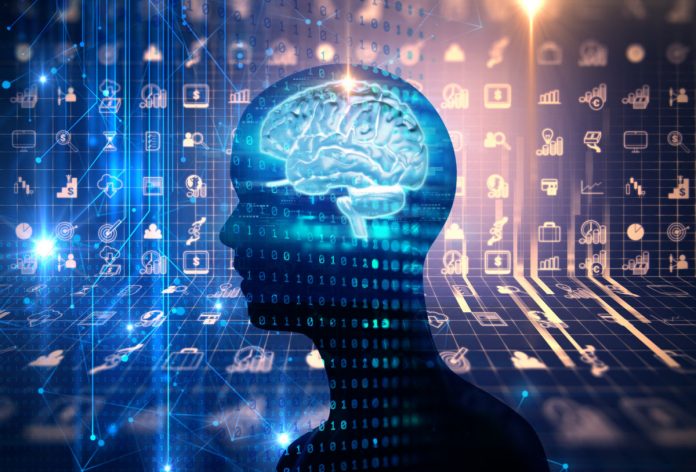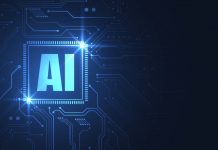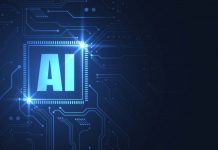This article has been written by Chaithra Raghavendra, pursuing a Training program on Using AI for Business Growth at LawSikho, and has been edited by Shashwat Kaushik.
It has been published by Rachit Garg.
Table of Contents
Introduction
While parents are still searching and studying how much screen time they should allow their children, AI tools have emerged in the field of education, resulting in its drastic alteration and changing the views of the future. All great changes are preceded by chaos. The AI tool in education was one such change that emerged because of the pandemic. Due to the pandemic, all the schools went into remote operation. Initially, this change to a remote environment was difficult not only for students but also for parents, teachers, and educational institutions. As time passed, people could adapt to this remote environment. Even today, most of the students want to go back to remote schools. I think that is the reason Nicholas Sparks said, “The first time you fall in love, it changes you forever, and no matter how hard you try, that feeling just never goes away.” Gone are the days when kids say, “My teacher, dad, mom, grandpa, or grandma taught me.” Now they say AI taught me.
AI is the development of computer programmes that are able to do tasks and solve problems given to them that usually require human intelligence. We, humans, have programmed technology to solve problems on our behalf and save some Kilobytes and Gigabytes of space in our brains, naming it AI (Artificial Intelligence).
Though AI has brought a revolution to the educational system, the decision to use AI tools in education depends on several factors, and there are challenges associated with it too. We have to consider all the possibilities carefully.
Fun fact: This fall, Harvard University will start using an AI professor to teach the popular intro level coding course CS50.
Importance of using AI in learning
AI tools have significantly improved the learning experience of students by providing the following benefits:
- Personalised education- AI analyses the students’ learning style, level of knowledge, and speed of learning, identifies weaknesses and interests, sets smaller goals, and helps them step by step to achieve their final goal. AI identifies their weaknesses and helps them convert them into strengths. As students achieve smaller goals, dopamine is built, and due to this, they will become constant learners.
- Intelligent tutoring system- By providing customised support and feedback, AI helps students understand how well they know the concepts and what steps have to be taken to master them. It helps them become independent learners.
- Enhanced accessibility- AI has made it more accessible to students with special needs and language barriers. For example, text to speech and speech-to-text technology can help students with visual or hearing impairments. It has helped students learn in the comfort of their homes at top colleges and schools.
- Engaging and interactive- AI tools such as “ChatGPT” have made learning engaging and interactive. AI gives immediate feedback, which has made students interested and motivated.
- Effective teaching- An AI tool can adjust the curriculum based on the class and student’s abilities, which ensures effective teaching methods.
- No additional efforts- As AI tools are being used to plan students’ lessons and curriculum, it can be improved by detailed pictures of course updates and learning materials to be reviewed. Due to this, teachers need not make additional efforts to search for updates and learning materials
- Identify and bridge gaps- If any student has not understood or missed any topic, AI tools can identify and inform teachers that there is a gap and a bridge has to be built by teaching this topic.
- Automation of tedious tasks- AI tools can automate tedious tasks such as preparing questions for class tests, making progress reports, organising materials for lectures, etc. These tasks require much work and are time-consuming if they have to be done manually. Once these tasks are automated, teachers will be able to spend more quality time with each student.
- Easy to learn- AI tools can recognise a big and tough topic and divide it into smaller topics, prepare study materials, and create tests and exercises for those smaller topics. This will help students understand better, and teachers can track the student’s development and help if they are stuck somewhere.
- 24/7 learning- The students look for extra help during their study time after class hours. The study time for students always varies, as some study in the evening, some study late at night, some study early in the morning, or some study only during exams and tests. AI tools can support students 24/7 by answering their queries. Students did not wait for their teacher’s to respond.
Limitations of using AI in learning

Let’s not forget that nothing comes easy, and challenges make life interesting. There are few challenges to implementing AI tools in educational systems
- Lack of trained teachers- This is one of the biggest challenges. Most of the teachers are not familiar with AI tools, and some do not have the skills and training to use them effectively; hence, they are unable to integrate this technology into their teaching.
- No resources to purchase- This is related to the cost of AI tools and applications. Many schools do not have the resources to purchase and maintain the technology needed to incorporate AI into the classroom.
- Data privacy and security- AI tools use a large amount of data about each individual; hence, all the information about students has to be collected and stored. So there is a concern for data privacy and security. In this world of technology, anyone can misuse the data.
- Impact on social and emotional development- Humans are social beings; AI tools might lead to over-reliance on technology and reduce human interaction, which in turn might lead to anxiety and depression.
Overcoming limitations
Overcoming challenges makes life meaningful. A few steps that schools and educational systems can take to overcome challenges are:
- Training about AI tools- Teachers should be given adequate training in AI tools and be supported to integrate AI technology. Schools should provide professional development opportunities to teachers who are skilled in AI tools and are implementing their skills in an effective way to teach the students.
- External funding- Schools may have to seek external funding or partnerships to purchase and maintain the technology of AI tools and incorporate AI into the classroom.
- Safeguarding data privacy and security- Educational systems and schools have to ensure that they have taken all the correct steps to protect students’ data and maintain the privacy and security of the data. Steps such as creating a strong password, regular backing up of data, ensuring devices are protected, installing Anti-Viruses, etc.
Current status of AI in the educational sector
AI is currently being used in various ways in the educational sector; for example, Chatbots provide 24/7 assistance to students and adapt their personalised learning algorithms according to their needs. It is also being used in automating administrative tasks, from giving grades to making question papers. It is also used to process and analyse vast amounts of data to create or implement new strategies for education.
Examples of some successful AI-powered learning tools:
- Duolingo: It is an AI-powered language learning app.
- ALEKS: It is an AI-powered mathematical problem solving app.
- Coursera: It is an AI-powered programme that helps students discover courses according to their interests.
Potential of AI in educational sector
Only AI has the potential to change our thinking processes related to the educational sector and the ability to revolutionise it. AI powered learning technologies are enhancing students’ learning experiences in ways never thought possible before, from providing personalised algorithms for learning to virtual and Augmented reality learning. AI has the power to change the world, and of course, the youth are the face of the future.
The most significant feature of AI learning is that it provides a personalised learning experience, which means that every student can modify the learning algorithms at their ease. And it also helps the educators learn about the preferences of a student and his strengths and weaknesses through the data generated. Apps like ‘ChatGPT’ analyse vast amounts of data and give the desired result within minutes, which saves a lot of time that goes into researching. It also assists the researchers and writers in writing or providing feedback and suggestions.
However, it must be kept in mind that AI is, after all, a human created entity, and its capabilities must work in conjunction with human intelligence. Apps like ‘ChatGPT’ can only provide us with some support. The final decision and responsibility for the results still lie with the researchers. And humans must be very careful while using AI because it can also prove to be a bane.
Conclusion
All we can say is thanks to AI tools, as they are getting more effective with the passing of time and are here to stay for the long run. AI is our reality, and we should accept and cope with it. It will be our responsibility to use it carefully to obtain its maximum benefits. We have to always remember that AI tools do not need to be an all or nothing solution. The need is to carefully study and analyse the pros and cons, then use them effectively.
A teacher’s presence is vital in any student’s life; as the Japanese proverb states, “Better than a thousand days in diligent study, is one day with a great teacher”. Teachers cannot be replaced, as they are the only people who not only tell the students the way for the journey of self-development through education but also show and involve themselves along with the students. AI tools will change the way teachers do their jobs and make them superheroes.
Al will provide a wide range of technology usage in education by creating engaging tools, tracking growth, tutoring, etc., and this will raise the quality of the educational process. Education systems focus on the quality of teaching and human interaction. So AI tools, education systems, and teachers have to collaborate, start working as a team, and invest in the best attributes of machines and teachers. This collaboration will bring out the best in the students. AI tools can help with repetitive and time-consuming tasks, and teachers and education systems can focus on creative and complex tasks with human interaction. The best part of this collaboration is that students will be able to learn from both education systems and get the best of both realms.
Let us not forget that today’s students will be our future AI professionals, and it’s important that students are exposed to AI tools. In the future, they may be known as the AI generation and might end up creating AI tools with creative and complex solving capabilities, which will take the technology to another level. Like always, things that seem impossible today might be possible in the future. This is just the seed of the unknown future that is planted, and we have to wait and watch what it will grow into.
References
- https://www.careerera.com/blog/advantages-and-disadvantages-of-ai-in-education
- https://thejournal.com/articles/2021/06/23/7-benefits-of-ai-in-education.aspx
- https://elearningindustry.com/incorporating-artificial-intelligence-into-classroom-examination-benefits-challenges-and-best-practices
- https://bernardmarr.com/how-is-ai-used-in-education-real-world-examples-of-today-and-a-peek-into-the-future/
Students of Lawsikho courses regularly produce writing assignments and work on practical exercises as a part of their coursework and develop themselves in real-life practical skills.
LawSikho has created a telegram group for exchanging legal knowledge, referrals, and various opportunities. You can click on this link and join:
Follow us on Instagram and subscribe to our YouTube channel for more amazing legal content.
 Serato DJ Crack 2025Serato DJ PRO Crack
Serato DJ Crack 2025Serato DJ PRO Crack










 Allow notifications
Allow notifications



